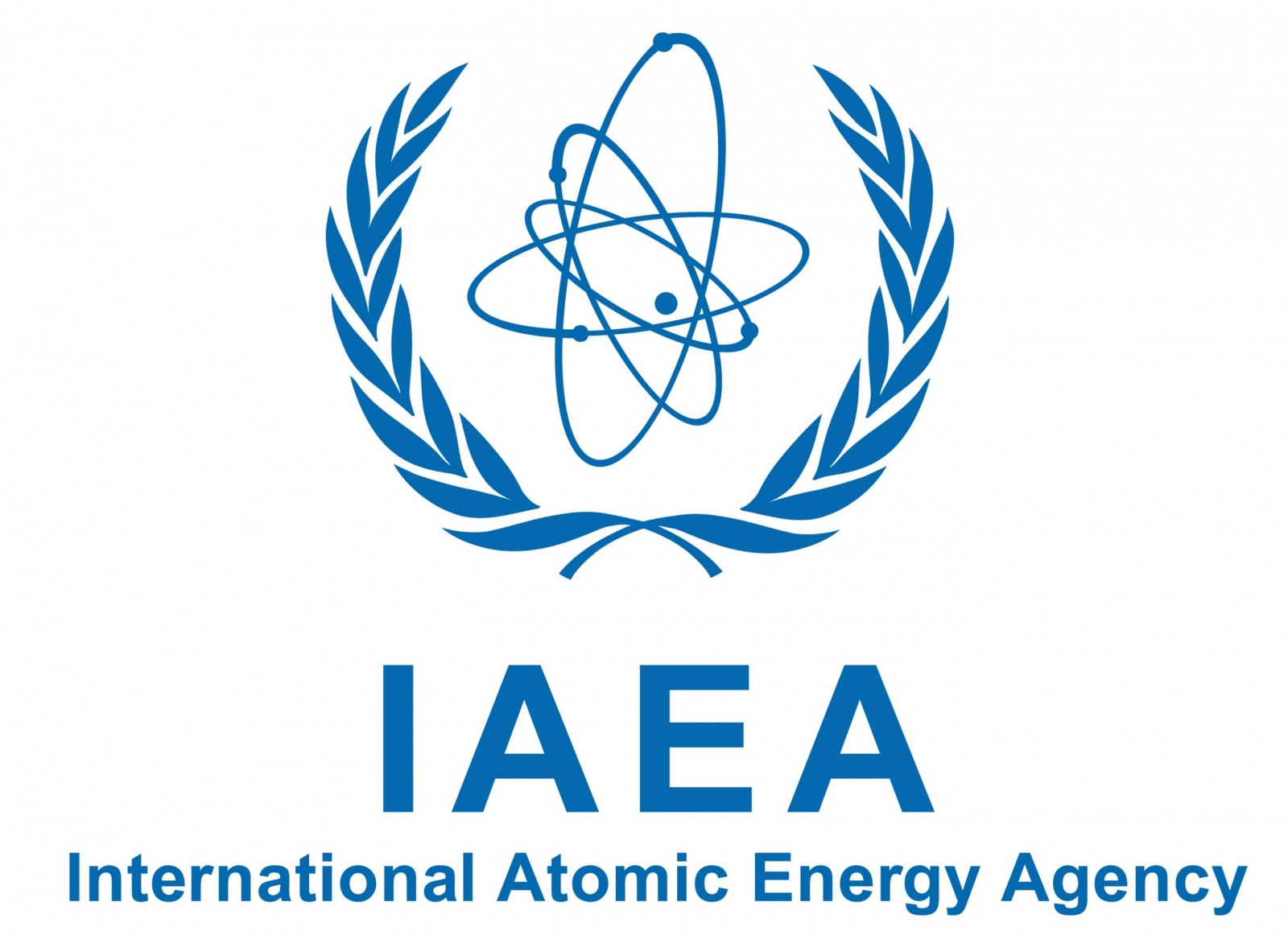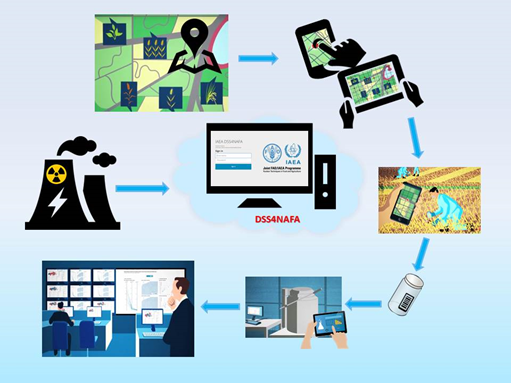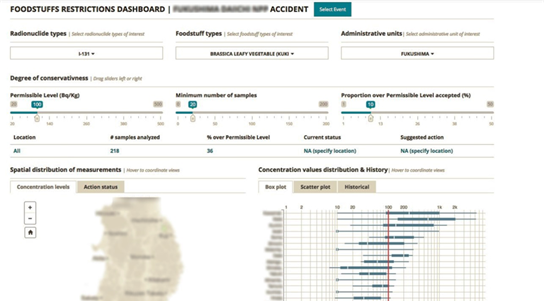
The International Atomic Energy Agency (IAEA) has developed an online system to assist in improving the response capabi lities of authorities in the event of an emergency caused by natural hazards. This tool provides a clear overview of radioactive contamination of crops and agricultural lands through improved data management and visualization, it also assists in decision support processes by suggesting management actions to decision makers. In this interview, we have the pleasure to introduce Ms Amelia Lee Zhi Yi, working at the Joint FAO/IAEA Division of Nuclear Techniques in Food and Agriculture to speak about DSS4NAFA, said system that will be extensively discussed hereafter.
lities of authorities in the event of an emergency caused by natural hazards. This tool provides a clear overview of radioactive contamination of crops and agricultural lands through improved data management and visualization, it also assists in decision support processes by suggesting management actions to decision makers. In this interview, we have the pleasure to introduce Ms Amelia Lee Zhi Yi, working at the Joint FAO/IAEA Division of Nuclear Techniques in Food and Agriculture to speak about DSS4NAFA, said system that will be extensively discussed hereafter.
1) Nuclear Emergency Response (NER) for food and agriculture – why is that important and what does that entail?
In the event of a nuclear or radiological emergency, the response should be performed swiftly in the interest of human health. After ensuring the well-being of the population, it is necessary to prioritize the assessment of possible radioactive contamination of crops and agricultural lands to avoid ingestion of radioactivity.
Proper data management, data visualization and risk communication are essential for efficient response to a nuclear emergency. Factors that should be considered for such response include support for sampling and laboratory analysis, optimal allocation of manpower and analytical instruments, and integrated communication between stakeholders.
To make well-informed decisions on for instance planting and food restrictions, food safety authorities need to have a good understanding of the radiological conditions after a fallout event. This is accomplished through the collection of environmental samples such as soil and plants, and food products that are then analysed using consistent methods in qualified laboratories. Further, these data should be displayed in an intuitive manner so that authorities will be able to interpret the data under stressful, time-bound conditions. Finally, to reduce confusion and clearly communicate decisions made to the public, standardized communication protocols of the decisions made by policymakers need to be implemented.
2) How can technology assist us in this process? What is DSS4NAFA?
Innovative information technology (IT)-based methods can assist in optimizing processes in NER. Some examples include streamlining data transfer using cloud-based platforms paired with mobile technologies, facilitating decision making using advanced visualization tools, and communicating risk to the public using pre-defined correspondence templates.
The Decision Support System for Nuclear Emergencies Affecting Food and Agriculture (DSS4NAFA), is a cloud-based IT-DSS tool developed by the Soil and Water Management & Crop Nutrition Laboratory, under the Joint FAO/IAEA Division of Nuclear Techniques in Food and Agriculture. While it was originally developed as a system for nuclear emergency response management and communication, its ability to discern data quality, to provide user-friendly spatio-temporal visualizations for decision makers, and ease in creation of communication materials makes it a good candidate tool for usage in natural hazard risk mitigation.
The beta version of DSS4NAFA is planned to be released in August 2018 for testing by volunteer member states.–

Figure 1. General overview of how DSS4NAFA works. After a nuclear or radiological fallout event affecting food and agriculture, the system assists decision makers by allocating samplers and laboratories according to proximity, allows for data to be input into a mobile device and sent to a cloud server immediately, and visualizes data for intuitive decision making (Source FAO-IAEA).
3) How does DSS4NAFA support public authorities in emergencies?
DSS4NAFA contains modules which provide logistical support to decision makers in defining sampling location, sampler allocation and laboratory allocation. It also functions as a powerful visual interpretation tool that brings together multi-dimensional data usually handled to make decisions on planting and food restrictions in a nuclear emergency response situation. Some of the functionalities of the modules are as below:
Data management:
- Standardized data input with pre-determined data entry fields and format
- Data housed within one server to ensure ease of data analysis
- All data collected in the field using mobile devices and are sent directly to the server
Data visualization:
- GIS based visualization for instinctive understanding of situation on the ground
- “Logmap” for at-a-glance sampler and laboratory analyses status
- Comprehensive information, such as current and historical decision actions, intuitively displayed on the Food Restriction Dashboard
Logistics and decision support:
- Sampling assignments proposed based on crop calendar and land use type
- Food and planting restrictions suggested based on the movable levels set by authorities
- Public communication module

Figure 2. The Food Restriction Dashboard is a platform in DSS4NAFA whereby radioactivity information is collated considering the spatial distribution and time resolution of the accident, and suggests food and planting restrictions based on the level of risk and the specified tolerance levels (Source FAO-IAEA).
4) What feedback did you get from real users during the design/development of the DSS?
The development of DSS4NAFA was highly iterative and findings from the process were invaluable. Some lessons learned during its development include the necessity for stakeholder involvement during the design process, the usage of a “one-house approach” for centralized data, and the importance of building a tool that is flexible enough to be used during emergency response and routine monitoring operations.
The system has generated a lot of interest when shown during several IAEA workshops and conferences such as at EGU, indicating the need for this type of system.
5) What do you think will be the main challenges in the application of the DSS4NAFA?
Two challenges are foreseen in the deployment of DSS4NAFA. The first is to explain the benefits of the system to countries with pre-existing Nuclear Emergency Response systems. We are confident that we can succeed as DSS4NAFA is modular, thus Member States can select and implement the components that suit their needs best.
Secondly, there could be some learning associated with the implementation of DSS4NAFA. To facilitate this process for governmental data analysts, user experience will be one of the major focus for improvement during the beta testing phase. We strive to develop DSS4NAFA such that the system will be intuitive for use to its fullest potential, even with minimal prior training.
The development of DSS4NAFA is part of the Joint FAO/IAEA Division Mandate in Preparedness and Response to Nuclear and Radiological Emergencies Affecting Food and Agriculture to promote the management of intra- and interagency emergency preparedness and response to nuclear accidents and radiological events affecting food and agriculture, including in the application of agricultural countermeasures.
#s3gt_translate_tooltip_mini { display: none !important; }
